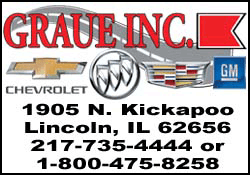|
 This was to have been a unique trade deal between open, developed
economies whose high wages meant trade unions did not need to fear
job-sapping floods of cheap imports. This was to have been a unique trade deal between open, developed
economies whose high wages meant trade unions did not need to fear
job-sapping floods of cheap imports.
But as negotiators prepare for their 10th meeting, in Brussels next
month, EU officials are complaining that U.S. counterparts are
inflexible and the European Parliament is so split on the subject of
the deal that it cannot even agree to debate it.
Senior trade officials initially forecast talks could conclude by
the end of 2014, but now they appear to be heading for the in-tray
of whoever succeeds Froman's boss Barack Obama in 2017.
"The two sides haven't really started negotiating yet. Even if they
hit full speed we are looking at something like 2019 or 2020 based
on a normal schedule," said Hosuk Lee-Makiyama, director of the
European Center for International Political Economy.
Timing is important. The partners envisage an agreement encompassing
a third of global trade that would set a standard for others to
follow, but their economic influence is gradually waning.

"The window of opportunity for the transatlantic west to set common
standards is shrinking because of initiatives by the global south,"
said Peter van Ham of Dutch think tank the Clingendael Institute,
referring to the China-led Asian Infrastructure Investment Bank as
an example.
The subject has whipped up ecology, consumer and civil society
groups who argue that this is a secretive deal for big corporations
that will lower food, environmental and health standards and cut
rather than increase jobs.
But even aside from problems posed by external pressures, officials
representing each region face considerable stress inside the
negotiating room.
WHO'S TOP DOG?
The United States and the European Union have successfully concluded
trade deals with other regions by imposing their methods on a
promise of a massive market of consumers in return.
Now they are finding that approach doesn't work with each other, and
a fight has broken out over who will be top dog.
A clash of styles was clear from the start. The European Commission,
armed with a mandate from EU members, presented an offer to cut
tariffs on 95 percent of products or "tariff lines" from the outset,
while the offer from the United States, more used to leaving issues
open until the end, only covered 67 percent of lines.
The partners also have different approaches to regulation, from
which most of the gains of the Transatlantic Trade and Investment
Partnership, known as TTIP, are expected to derive given tariffs are
already low.
In some areas, such as automobile safety, there is a meeting of
minds. In many other fields the United States wants Europe to reform
its regulatory process, while the EU has urged regulatory bodies to
find ways of reconciling differences.

[to top of second column] |

Other matters look extremely tough to reconcile, such as the EU's
system of "geographic indications" (GIs), a designation of origin
protection which means that only Greeks can use the term "feta" for
their cheese and that parma ham must come from Italy. Many in the
United States view this as protectionism.
LEVEL OF AMBITION
Public concerns have also led to delay. The issue of protecting
investors against new regulation that could affect businesses -
previously a matter only for trade technocrats - blew up as an issue
at the end of 2013, forcing the Commission to suspend talks on
investment and to launch a public consultation which drew 150,000
mostly negative responses.
"It has been slowed down, but slowed down for a very good reason.
It's brought into question the level of ambition of TTIP. Will it be
a one-off trade deal or a 'living' agreement that evolves?" said van
Ham.
A further hurdle is that the United States has prioritized a
trans-Pacific trade deal, meaning TTIP is only second in line. The
presidential election could also slow progress in 2016.
Simon Lester, of the Cato Institute, believes a very broad deal may
simply be asking too much. He suggests that negotiators drop
investor protection and GIs from any deal.
"Trying to include them would push a deal to 2018 and beyond.
Without them and with focus, it's something that could be achievable
within a year," he said.
Still, out of the limelight, some progress is being made.
U.S. and EU pharmaceutical regulators have agreed that biosimilars,
near copies of original biological medical products whose patents
have expired, may be approved with a single test rather than two
expensive studies on each side of the Atlantic.

EGA, the European Generic and Biosimilar Medicines Association, says
they are also considering common single tests for complex generics
and for pharmaceutical manufacturing sites.
"A lot of groups are angry, but here is something with benefits for
everyone - lower costs for businesses and cheaper medicines," said
EGA director general Adrian van den Hoven.
(Reporting By Philip Blenkinsop; Editing by Sophie Walker)
[© 2015 Thomson Reuters. All rights
reserved.] Copyright 2015 Reuters. All rights reserved. This material may not be published,
broadcast, rewritten or redistributed. |